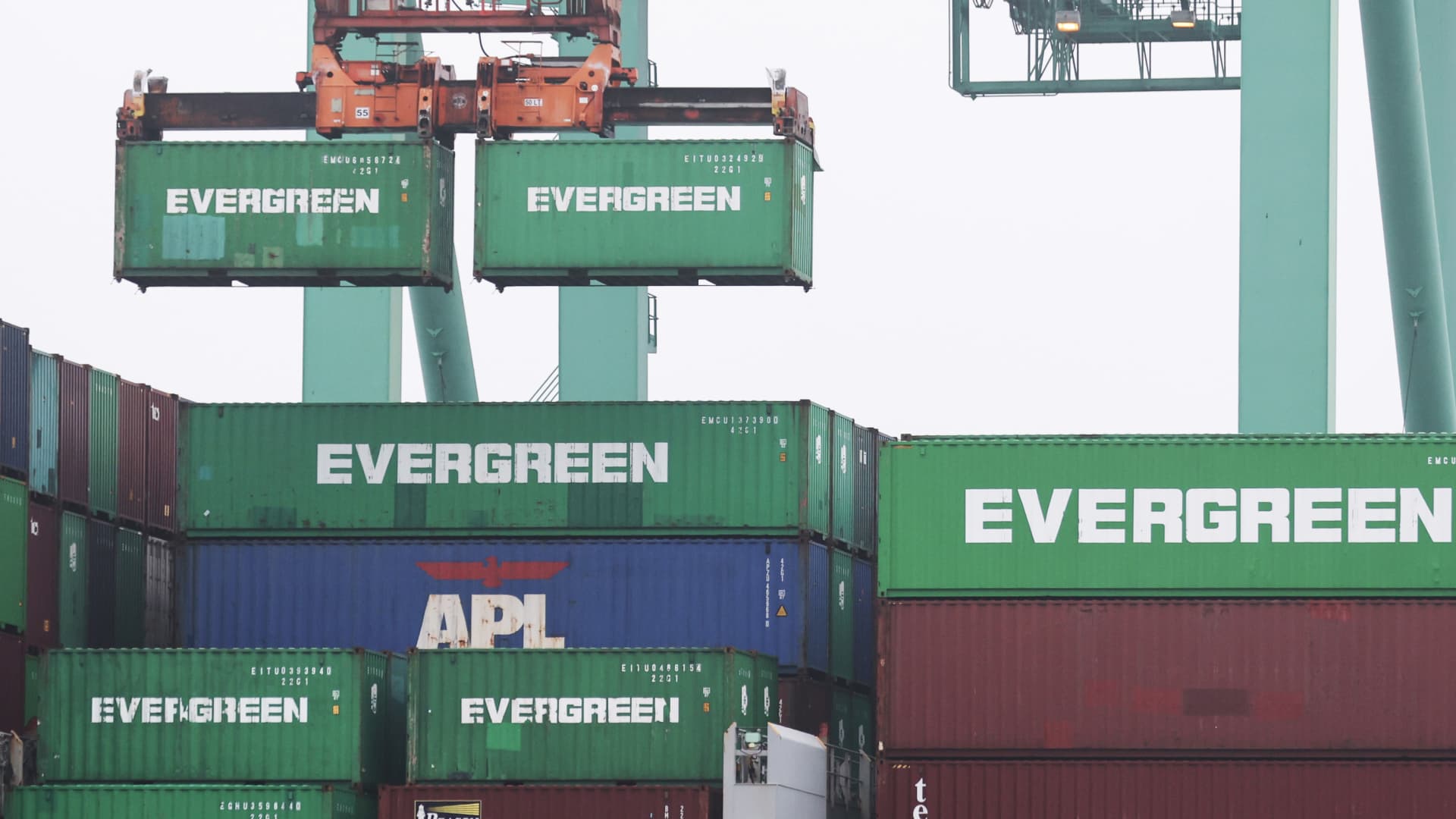
Shipping containers are offloaded from a container ship in the Port of Los Angeles before U.S. President Joe Biden delivers remarks aboard the Battleship USS Iowa Museum on June 10, 2022 in Los Angeles, California.
Mario Tama | Getty Images
Nearly a third of logistics managers at major companies and trade groups say they do not know how much trade they would return to the West Coast once an International Longshore and Warehouse Union, or ILWU, labor deal is reached, according to CNBC’s supply chain survey.
Eighteen percent of respondents said they would bring back 10% of their diverted trade, another 12% surveyed said they would bring back 20% of the trade they moved away, and another 12% were more bullish, saying they would bring back 60% of their diverted trade.
The survey questioned 341 logistic managers the week of Dec. 12-19 at companies that are members of the National Retail Federation, the American Apparel and Footwear Association, the Council Of Supply Chain Management Professionals, the Pacific Coast Council, the Agriculture Transportation Coalition and the Coalition Of New England Companies For Trade.
Of those surveyed, 49% said they did not divert trade, compared to 40% who said they did.
Over half of those respondents told CNBC the main reason for moving trade away from the West Coast was the threat of an ILWU strike. About 40% cited both California’s AB5 “gig worker” law, which concerns the employment status of drivers, and rail delays. Respondents could list multiple reasons for the trade diversion.
Negotiations between the ILWU and their employer, the Pacific Maritime Association, have been ongoing since May 10. One of the biggest winners in the diversion of trade is the Port of New York and New Jersey which has taken the top spot in the nation, knocking the Port of Los Angeles to either second or third depending on the month.
The unresolved fears have migrated trade away from the West Coast to East Coast and Gulf ports. That has benefited East Coast warehouses as well as the two large railroads that service the ports seeing the boom in containers, CSX and Norfolk Southern. According to ITS Logistics, which monitors rail cargo trends, the volume of freight moving out of the East Coast doubles that of the West Coast.
Of those surveyed, more than half of logistics managers surveyed by CNBC do not expect the supply chain to return to normal until 2024 or after.
From January to November, 4.6 million loaded import twenty-foot equivalent units, or TEUs, with a total value of about $282 billion moved through the Port of Los Angeles. This is in comparison to the Port of New York and New Jersey, which processed 4.5 million TEUs during the same timeframe with a value of about $274.6 billion. The value of a container entering the ports is approximately $61,000, based on customs data.
The Port of New York and New Jersey took the number one slot starting in September in processing containers.







